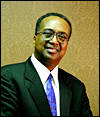
By RONI RABIN-Essay NY Times
Around the time report cards came home this spring, federal health officials approved another new vaccine to add to the ever-growing list of recommended childhood shots — this one for girls and women only, from 9 to 26, to protect them from genital warts and cervical
cancer. One of my own daughters, who just turned 9, would be a candidate for this vaccine, so I’ve been mulling this over. A shot that protects against cancer sounds like a great idea, at first. States may choose to make it mandatory, though the cost for them to do so would be prohibitive. But let’s think carefully before requiring young girls to get this vaccine, which protects against a sexually transmitted
virus, in order to go to school. This isn’t
polio or
measles, diseases that are easily transmitted through casual contact. Infection with this virus requires intimate contact, of the kind that doesn’t occur in classrooms. Besides, we already know how to prevent cervical cancer in this country, and we’ve done a darn good job of it. In the war against cancer, the battle against cervical cancer has been a success story. Why, then, did federal health officials recommend the inoculation of about
30 million American girls and young women against the
human papillomavirus, a
sexually transmitted disease that in rare cases leads to cervical cancer?
Vaccine supporters say that some 3,700 American women die of cervical cancer each year, and close to 10,000 cases are diagnosed. Cervical cancer has a relatively high survival rate, but every death is tragic and treatment can rob women of their
fertility. Still, you have to see the numbers in context. Cervical cancer deaths have been dropping consistently in the United States — and have been for decades. Cervical cancer has gone from being one of the top killers of American women to not even being on the top 10 list. This year cervical cancer will represent just 1 percent of the 679,510 new cancer cases and 1 percent of the 273,560 anticipated cancer deaths among American women. By contrast, some 40,970 women will die of
breast cancer and 72,130 will die of lung cancer. According to the
American Cancer Society Web site, “Between 1955 and 1992, the number of cervical cancer deaths in the United States dropped by 74 percent.” Think about it: 74 percent.
The number of cases diagnosed each year and the number of deaths per year have continued to drop, even though the population is growing. From 1997 to 2003, the number of cervical cancers in the United States dropped by 4.5 percent each year, while the number of deaths dropped by 3.8 percent each year, according to a government Web site that tracks cancer trends, called SEER or Surveillance, Epidemiology and End Results (
seer.cancer.gov/statfacts/html/cervix.html). This, while many other cancers are on the rise. If current trends continue, by the time my 9-year-old daughter is 48, the median age when cervical cancer is diagnosed, there will be only a few thousand cases of the cancer in women, and about 1,000 deaths or fewer each year, even without the vaccine.
 KNN Staff
KNN Staff



